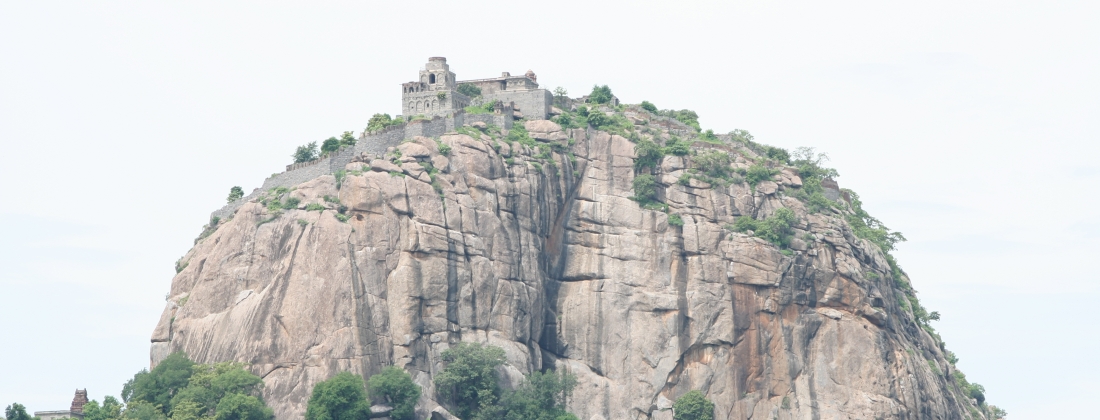
Day Excursions
… in the wider Auroville region
We will gladly help you with hotel and transport bookings to organize short trips through the wider region around Auroville. The descriptions below give you an idea of the many attractions waiting to be discovered in Auroville’s South Indian surroundings. These can be combined to create a short trip based on your preferences.
Chidambaram – about 85 km from Auroville
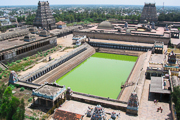 Surrounded by four imposing temple towers, the Nataraja temple in Chidambaram is one of the holiest places in South India. Numerous ceremonies and a traditional atmosphere offer fascinating insight into the ritualized world of Hinduism. Shiva is worshiped here in the form of Nataraja who expresses five forces through his cosmic dance: creation, preservation, destruction, illusion and grace. The construction of the 600 x 495 m large temple complex was started in the 10th century by the Chola dynasty. Characteristic of the Dravidian style is a rectangular floor plan and a firm geometric structure. The 40 m high gopurams (gateway towers) form the entrance gateways to the courtyard, which contains the central sanctum, the temple pond and several secondary shrines. The western and eastern gateway are decorated with the entire 108 basic positions of South Indian Bharatanatyam dance.
Surrounded by four imposing temple towers, the Nataraja temple in Chidambaram is one of the holiest places in South India. Numerous ceremonies and a traditional atmosphere offer fascinating insight into the ritualized world of Hinduism. Shiva is worshiped here in the form of Nataraja who expresses five forces through his cosmic dance: creation, preservation, destruction, illusion and grace. The construction of the 600 x 495 m large temple complex was started in the 10th century by the Chola dynasty. Characteristic of the Dravidian style is a rectangular floor plan and a firm geometric structure. The 40 m high gopurams (gateway towers) form the entrance gateways to the courtyard, which contains the central sanctum, the temple pond and several secondary shrines. The western and eastern gateway are decorated with the entire 108 basic positions of South Indian Bharatanatyam dance.
Pichavaram – about 10 km from Chidambaram
Stretching out over an area of 11 km² , Pichavaram boasts an impressive mangrove habitat that can be explored on a scenic boat tour. The mangrove forest, which consists of rare mangrove plants, forms a protected habitat for over 170 species of birds and a variety of other animal species.
Tranquebar (Tharangambadi) – about 80 km from Auroville
Located right on the Coromandel coast, the picturesque town of Tranquebar is a place of rich history and remarkable cultural heritage. From the mid-17th century, Tranquebar was (with two brief interruptions) a Danish colony, until it was sold to the British in the mid-19th century. Its history is reflected in a Danish cemetery and several interesting buildings, such as the impressive Fort Dansborg, the Church of Zion and the New Jerusalem Church. The Lutheran missionary work in Tamil Nadu also started from here. In the early 18th century, the Danish-Halle mission sent the German missionaries Bartholomaeus Ziegenbalg and Heinrich Plütschau to Tranquebar, and at the start of the 18th century they established a Lutheran congregation, despite opposition from the Danish colonial authorities. The Ziegenbalg Museum provides an insight into the work of the missionary, who was also active as an Indologist. Since the 2004 Tsunami caused greater damage in Tranquebar, several national and international organizations and projects have successfully endeavored to preserve the site and the traditional crafts of the region.
Gingee – about 65 km from Auroville
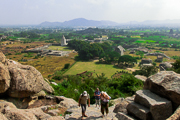 Near the small town of Gingee is a historic fortress that extends across three large hills in a picturesque rocky landscape. A 5 km long fortification wall encloses an area of 7 km² with historic buildings from different eras. The construction of the fortress began in the 13th century during the Chola dynasty. Later, the fort changed hands several times, coming under the control of rulers from the Vijayanagara, Nayak, Bijapur, Maratha and Mogul dynasties. Inside the fort are granaries, barracks, training halls, stables, temples and the remains of a former palace complex. Definitely worth seeing is the Kalyana Mahal with its octagonal tower, built around 1550 in Indo-Saracenic style. The climb to the citadel of the Rajagiri hill is particularly worthwhile because of the wonderful views.
Near the small town of Gingee is a historic fortress that extends across three large hills in a picturesque rocky landscape. A 5 km long fortification wall encloses an area of 7 km² with historic buildings from different eras. The construction of the fortress began in the 13th century during the Chola dynasty. Later, the fort changed hands several times, coming under the control of rulers from the Vijayanagara, Nayak, Bijapur, Maratha and Mogul dynasties. Inside the fort are granaries, barracks, training halls, stables, temples and the remains of a former palace complex. Definitely worth seeing is the Kalyana Mahal with its octagonal tower, built around 1550 in Indo-Saracenic style. The climb to the citadel of the Rajagiri hill is particularly worthwhile because of the wonderful views.
Tiruvannamalai – about 110 km from Auroville
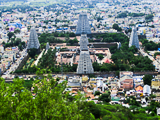 The pilgrimage town of Tiruvannamalai is situated at the foot of the holy Arunachala mountain, which is regarded as a manifestation of Lord Shiva. Sri Ramana Maharshi, one of the most widely recognized masters of Advaita Vedanta in the 20th century, lived on the Arunachala. A visit to the Sri Ramana Ashram is highly recommended. A footpath leads from there to the holy mountain, where two chapels can be found that accommodated the master for many years and which visitors can access during the day for meditation. From the mountain, you have a wonderful view of the city’s Arunachaleshvara temple, where Shiva is worshiped in the form of the Fire element. The temple complex, divided into three courtyards, is among the most famous in Tamil Nadu.
The pilgrimage town of Tiruvannamalai is situated at the foot of the holy Arunachala mountain, which is regarded as a manifestation of Lord Shiva. Sri Ramana Maharshi, one of the most widely recognized masters of Advaita Vedanta in the 20th century, lived on the Arunachala. A visit to the Sri Ramana Ashram is highly recommended. A footpath leads from there to the holy mountain, where two chapels can be found that accommodated the master for many years and which visitors can access during the day for meditation. From the mountain, you have a wonderful view of the city’s Arunachaleshvara temple, where Shiva is worshiped in the form of the Fire element. The temple complex, divided into three courtyards, is among the most famous in Tamil Nadu.
During full moon nights, Tiruvannamalai is a popular place of pilgrimage for several hundred thousand Hindus who, as per traditional practice, walk around the sacred mountain. Tradition has it that Shiva appeared at the mountain, first in the form of a pillar of light. On the full moon of the Tamil month Karthikai (November/December), a large fire is lit on top of the mountain, in reminiscence of the appearance of the light column. This event draws millions of pilgrims to the city.
Mahabalipuram (Mamallapuram) – about 95 km from Auroville
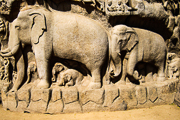 Located on the Coromandel coast, Mahabalipuram (also Mamallapuram) is referred to as the cradle of South Indian culture and is an important excavation site for masterpieces from the Pallava period (6th – 8th century). In 1985, the monuments were declared a UNESCO World Heritage Site. Attractions include the Monolith temple and the Cave temple, with its magnificent imagery of the gods. It was the first temple in the region constructed from stone blocks. Large reliefs chiseled in granite narrate well known legends of Hindu mythology. The monolithic “Five Rathas” monuments served as architectural models on the basis of which the fundamental elements of Dravidian temple construction were developed. “Krishna’s Butterball” is a huge spherical boulder, lying on an inclined plane. Mahabalipuram is also a center of traditional sculpture. Indian statues of the gods in granite, marble and soapstone are still made by hand here in small family businesses.
Located on the Coromandel coast, Mahabalipuram (also Mamallapuram) is referred to as the cradle of South Indian culture and is an important excavation site for masterpieces from the Pallava period (6th – 8th century). In 1985, the monuments were declared a UNESCO World Heritage Site. Attractions include the Monolith temple and the Cave temple, with its magnificent imagery of the gods. It was the first temple in the region constructed from stone blocks. Large reliefs chiseled in granite narrate well known legends of Hindu mythology. The monolithic “Five Rathas” monuments served as architectural models on the basis of which the fundamental elements of Dravidian temple construction were developed. “Krishna’s Butterball” is a huge spherical boulder, lying on an inclined plane. Mahabalipuram is also a center of traditional sculpture. Indian statues of the gods in granite, marble and soapstone are still made by hand here in small family businesses.
Thirukalikundram – about 15 km from Mahabalipuram
 The 7th century hill temple dedicated to Shiva is accessible via some 500 granite steps. The priests at this temple often feed birds of prey at noon. According to Hindu mythology, the birds – on their way from Varanasi to Rameshvaram – settle on a rock in front of the temple to eat there. It is a custom that has been documented for more than 500 years, but there’s no guarantee of a feeding every day. To escape the midday heat during the steep ascent, we recommend a visit later in the afternoon. With its beautiful view, the temple terrace makes for an ideal place to enjoy the atmospheric South Indian sunset.
The 7th century hill temple dedicated to Shiva is accessible via some 500 granite steps. The priests at this temple often feed birds of prey at noon. According to Hindu mythology, the birds – on their way from Varanasi to Rameshvaram – settle on a rock in front of the temple to eat there. It is a custom that has been documented for more than 500 years, but there’s no guarantee of a feeding every day. To escape the midday heat during the steep ascent, we recommend a visit later in the afternoon. With its beautiful view, the temple terrace makes for an ideal place to enjoy the atmospheric South Indian sunset.
Madras Crocodile Bank – about 10 km from Mahabalipuram
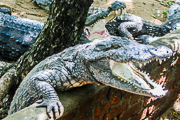 Another attraction near Mahabalipuram is the Madras Crocodile Bank, a reptile zoo, which seeks to promote the conservation of reptiles and amphibians in the Indian subcontinent. The Madras Crocodile Bank was founded in 1976 in an attempt to save three South Indian crocodile species from extinction (mugger crocodile, saltwater crocodile and gharial). The breeding efforts were so successful that the crocodile population of the Crocodile Bank grew to more than 8000 in the early 90s. Today, a variety of reptiles and amphibians can be admired at the Crocodile Bank. Attached to it is an agency of the Irula Snake Catchers Industrial Cooperative Society (ISCICS), where visitors can observe how poisonous snakes are milked for their venom, which is used for the production of anti-venom.
Another attraction near Mahabalipuram is the Madras Crocodile Bank, a reptile zoo, which seeks to promote the conservation of reptiles and amphibians in the Indian subcontinent. The Madras Crocodile Bank was founded in 1976 in an attempt to save three South Indian crocodile species from extinction (mugger crocodile, saltwater crocodile and gharial). The breeding efforts were so successful that the crocodile population of the Crocodile Bank grew to more than 8000 in the early 90s. Today, a variety of reptiles and amphibians can be admired at the Crocodile Bank. Attached to it is an agency of the Irula Snake Catchers Industrial Cooperative Society (ISCICS), where visitors can observe how poisonous snakes are milked for their venom, which is used for the production of anti-venom.
Vedanthangal Bird Sanctuary – 90 km from Auroville
This bird sanctuary, already established in 1798, officially extends along Vedanthangal lake over a marshland area of 30 hectares; a paradise for bird lovers. A larger surrounding area, consists of 10 sq. km of open grasslands, marshes, forests and lakes. It forms a suitable breeding habitat for more than 100,000 native and migratory birds. Among the bird species are the Pintail, Garganey, Wagtail, Eurasian Teal and Sandpiper. The best time to visit is during the breeding season, between November and February.
Kanchipuram – about 120 km from Auroville
 According to Indian tradition, the pilgrimage center of Kanchipuram, equally dedicated to the gods Shiva and Vishnu, is among the seven holy cities of Hinduism. The remarkable cultural-historical past of the place, which already existed in the pre-Christian era, began in the 4th century, when the Pallava dynasty elevated Kanchipuram to the status of capital. Its lovely temples from three South Indian cultural epochs (Pallava, Chola and Vijayanagara) make a visit to this town worthwhile. The oldest of the surviving temples is the Kailasanatha temple, a Shiva temple built towards the end of the 7th century and considered one of the finest examples of the early Dravidian temple style. The Vaikuntha Perumal temple, dating back to the 8th century and devoted to the god Vishnu, demonstrates the sophisticated architecture of the Pallava period. The largest temple is the Ekambareshvara temple, a Shiva shrine with five courtyards, built in 1509 by the Vijayanagara dynasty around a sacred mango tree. Kanchipuram also has a long tradition of producing fine silk fabrics.
According to Indian tradition, the pilgrimage center of Kanchipuram, equally dedicated to the gods Shiva and Vishnu, is among the seven holy cities of Hinduism. The remarkable cultural-historical past of the place, which already existed in the pre-Christian era, began in the 4th century, when the Pallava dynasty elevated Kanchipuram to the status of capital. Its lovely temples from three South Indian cultural epochs (Pallava, Chola and Vijayanagara) make a visit to this town worthwhile. The oldest of the surviving temples is the Kailasanatha temple, a Shiva temple built towards the end of the 7th century and considered one of the finest examples of the early Dravidian temple style. The Vaikuntha Perumal temple, dating back to the 8th century and devoted to the god Vishnu, demonstrates the sophisticated architecture of the Pallava period. The largest temple is the Ekambareshvara temple, a Shiva shrine with five courtyards, built in 1509 by the Vijayanagara dynasty around a sacred mango tree. Kanchipuram also has a long tradition of producing fine silk fabrics.
Chennai – about 150 km from Auroville
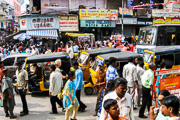 Situated on the east coast, the sprawling capital of Tamil Nadu is an ideal arrival and departure point for tours in Southeast India because of its excellent air and rail links. Besides the great scope for shopping, the city is characterized by a number of attractions. Founded in 1857, the Government Museum in Egmore district provides an interesting insight into the cultural history of the country with its collection of exquisite exhibits. Built in 1644 and being the first British fort in India, Fort St. George was an important base for the British East India Company and is now the seat of the Tamil Nadu state government. St. Thomas Mount, in the vicinity of the airport, is a famous pilgrimage site for the Saint Thomas Christians, whose history traces back to the first mission of the Apostle Thomas. A church, built in 1523, is situated on top of the hill, its altar marking the spot where, according to tradition, St. Thomas died as a martyr in 72 AD. In Adiyar district one can find the world headquarters of the Theosophical Society and the famous Kalakshetra dance and music school. Stretching for several kilometers, Marina Beach is a popular destination for an evening stroll on the beach.
Situated on the east coast, the sprawling capital of Tamil Nadu is an ideal arrival and departure point for tours in Southeast India because of its excellent air and rail links. Besides the great scope for shopping, the city is characterized by a number of attractions. Founded in 1857, the Government Museum in Egmore district provides an interesting insight into the cultural history of the country with its collection of exquisite exhibits. Built in 1644 and being the first British fort in India, Fort St. George was an important base for the British East India Company and is now the seat of the Tamil Nadu state government. St. Thomas Mount, in the vicinity of the airport, is a famous pilgrimage site for the Saint Thomas Christians, whose history traces back to the first mission of the Apostle Thomas. A church, built in 1523, is situated on top of the hill, its altar marking the spot where, according to tradition, St. Thomas died as a martyr in 72 AD. In Adiyar district one can find the world headquarters of the Theosophical Society and the famous Kalakshetra dance and music school. Stretching for several kilometers, Marina Beach is a popular destination for an evening stroll on the beach.
DakshinaChitra – about 20 km from Chennai
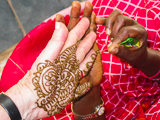 Well worth a visit is DakshinaChitra, an interesting project of the Madras Craft foundation, located on the East Coast Road in Muttukadu, about 20 km south of Chennai. As a vibrant center of traditional arts and crafts, architecture and performing folk arts, it gives a comprehensive and interesting insight into various aspects of South Indian culture.
Well worth a visit is DakshinaChitra, an interesting project of the Madras Craft foundation, located on the East Coast Road in Muttukadu, about 20 km south of Chennai. As a vibrant center of traditional arts and crafts, architecture and performing folk arts, it gives a comprehensive and interesting insight into various aspects of South Indian culture.
E-mail: insight@auroville.org.in
